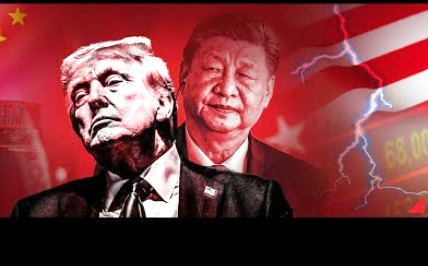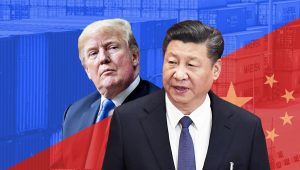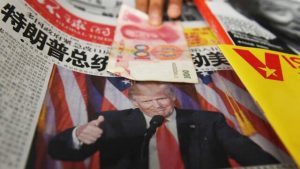China Strikes a Defiant Tone as Trump Threatens 100% Tariffs: A Renewed Clash with Global Stakes

When former US President Donald Trump issued his latest threat of a 100% tariff on all Chinese imports, Beijing wasted no time pushing back. Calling Washington’s move a dangerous escalation and a display of double standards. China warned that it was prepared to retaliate with countermeasures, signaling that the world’s two largest economies may once again be heading for a bruising trade confrontation. But beyond the fiery headlines and diplomatic barbs, the renewed tensions hint a profound anxieties of job losses, families’ incapacitation of basic amenities and a global economic system still wobbling under the weight of post-pandemic recovery.

Trump’s remarks revived the trade-war playbook of his presidency. Back then, his tariffs on Chinese steel, aluminum and consumer goods reshaped global supply chains and shook ordinary families from Iowa to Shenzhen.
Now, the threat of a 100% tariff dwarfs those earlier moves. This could double prices of everyday American goods, from electronics to clothing, while risking fresh supply shocks. Already, millions of consumers in the US are grappling with inflation. The consequences of the Trump’s threat could start affecting individuals’ economy immediately, in the America.
In Beijing, officials dismissed Trump’s comments as economic bullying, accusing Washington of weaponizing trade to score political points. The Chinese Commerce Ministry replied that there will be a possible retaliatory tariffs and restrictions on American agricultural and technology imports, measures that could once again squeeze American farmers and exporters who have only recently begun to recover from the last trade war.
The trade war is a human story played out on diplomatic and economic chess match.
In China’s southern manufacturing hubs, workers remember 2018 vividly, where factories once bustling with export orders slowed to a crawl, causing some to shut their business-doors. Across the Pacific, many American families bore a different kind of burden. Rising import costs meant higher prices on essentials, even as retaliatory tariffs hit US farmers exporting soybeans, pork and corn.
Donald Trump’s threat is politically and economically weaved. By reigniting his hardline stance on China, he taps into voter frustration over manufacturing losses, trade deficits and national pride. Analysts say the tariffs are part of a broader populist message. A trade campaign framing the Chinese commerce/government as both a rival and scapegoat.
In the meantime, the depiction is portraying Beijing as walking on a faint line. President Xi Jinping’s government, which is facing its own economic slowdown, wants to project strength without triggering a spiral that could further unsettle its fragile recovery. The state media has declared that China will not be trade-bullied, although it also emphasized the importance of stability and negotiation.
Silently, the world is watching the renewed trade war. Europe that is still struggling to manage its own trade disputes with both Washington and Beijing, fears that there may be another rupture in global supply chains. And most emerging markets, many of which depends on Chinese manufacturing and US demand, worry about collateral damage.

At the center of it all, the US-China latest trade-war pawns the ordinary people into a socioeconomic heat, as it transcends geopolitical interface. From the factory worker in Dongguan assembling toys for American shelves, to the Ohio family shopping for household/school amenities, the costs of this confrontation is shared regardless of the politics.
So, as Beijing cautions on countermeasures while Washington doubles-down on their trade-bravado campaign, a clear concern here is that the ignorance of a mutual favourable negotiation will grossly impact the world’s two biggest economic competitors who are bound by trade/technology, and further crumble the hopes of millions of people who depend on their commerce.







